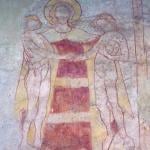THE USES AND ABUSES OF JANE JACOBS:
…Given urban planners’ almost universal reverence for Jacobs, it is ironic that many have largely ignored or misinterpreted the central lesson of “Death and Life”–that cities are vibrant living systems, not the product of grand, utopian schemes concocted by overzealous planners.
Modern planners have contorted Jacobs’s beliefs in hopes of imposing their static, end-state vision of a city. They use a set of highly prescriptive policy tools–like urban growth boundaries, smart growth, and high-density development built around light-rail transit systems–to design the city they envision. They try to “create” livable cities from the ground up and micromanage urban form through regulation. We’ve seen these tools at work in Portland, Ore., for more than three decades. But the results have been dismal and dramatic. The city’s “smart growth” policies effectively created a land shortage, constricting the housing supply and artificially inflating prices. By 1999, Portland had become one of the 10 least affordable housing markets in the nation, and its homeownership rate lagged behind the national average. It has also seen one of the nation’s largest increases in traffic congestion and boasts a costly, heavily subsidized light-rail system that accounts for just 1% of the city’s total travel. Not exactly how they planned it.
That’s because these planning trends run completely counter to Jacobs’s vision of cities as dynamic economic engines that thrive on private initiative, trial and error, incremental change, and human and economic diversity. Jacobs believed the most organic and healthy communities are diverse, messy and arise out of spontaneous order, not from a scheme that tries to dictate how people should live and how neighborhoods should look. …
As Jacobs opined in a 2001 Reason magazine interview, “the New Urbanists want to have lively centers in the places that they develop. . . . And yet, from what I’ve seen of their plans and the places they have built, they don’t seem to have a sense of the anatomy of these hearts, these centers. They’ve placed them as if they were shopping centers. They don’t connect.”











